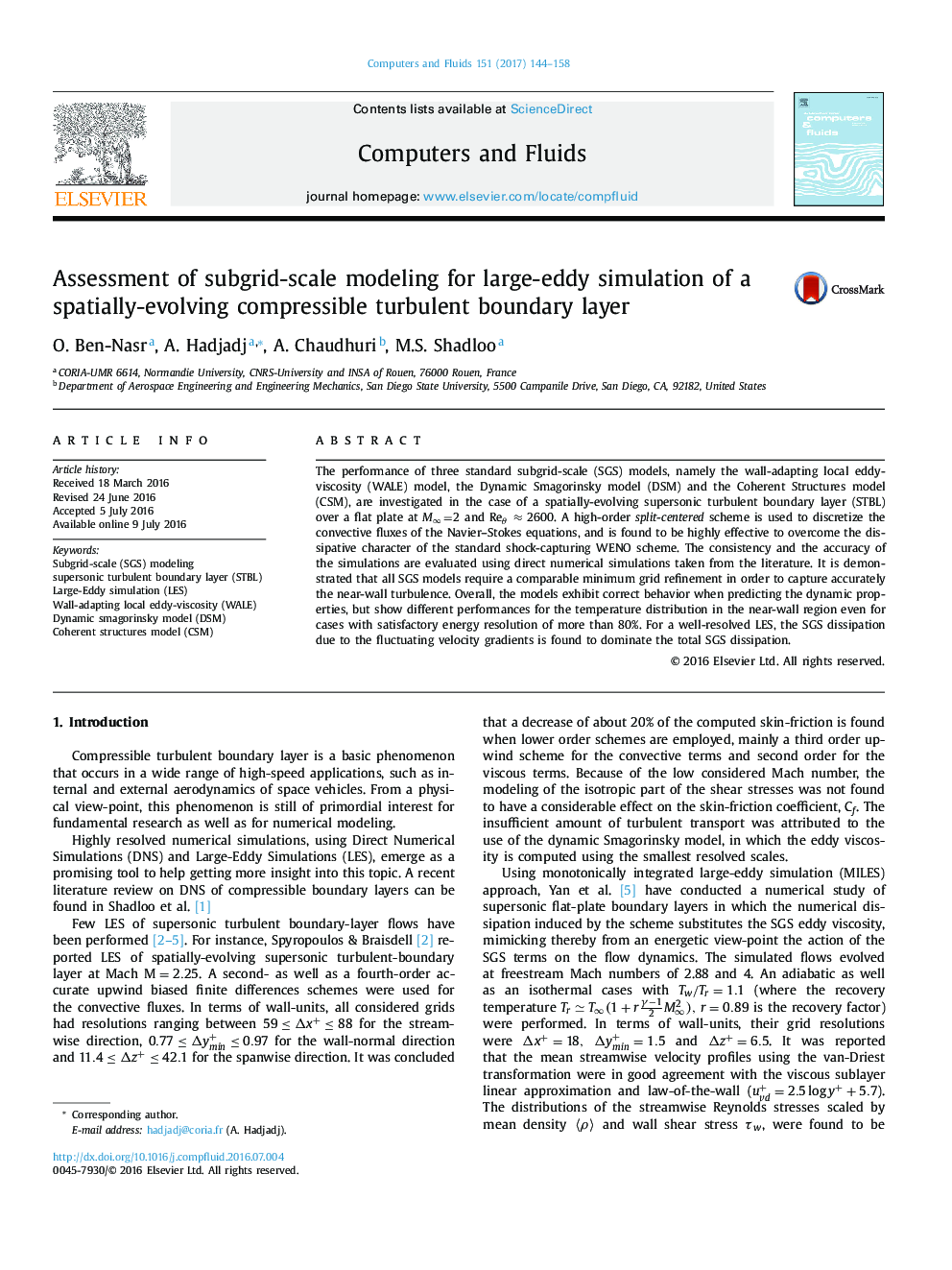| Article ID | Journal | Published Year | Pages | File Type |
|---|---|---|---|---|
| 5011845 | Computers & Fluids | 2017 | 15 Pages |
â¢Assessment of the prediction quality of three popular SGS models.â¢Near-wall asymptotic behaviour for supersonic turbulent boundary layer.â¢Analysis of SGS dissipation, numerical scheme and mesh resolution.
The performance of three standard subgrid-scale (SGS) models, namely the wall-adapting local eddy-viscosity (WALE) model, the Dynamic Smagorinsky model (DSM) and the Coherent Structures model (CSM), are investigated in the case of a spatially-evolving supersonic turbulent boundary layer (STBL) over a flat plate at Mâ=2 and Reθ â 2600. A high-order split-centered scheme is used to discretize the convective fluxes of the Navier-Stokes equations, and is found to be highly effective to overcome the dissipative character of the standard shock-capturing WENO scheme. The consistency and the accuracy of the simulations are evaluated using direct numerical simulations taken from the literature. It is demonstrated that all SGS models require a comparable minimum grid refinement in order to capture accurately the near-wall turbulence. Overall, the models exhibit correct behavior when predicting the dynamic properties, but show different performances for the temperature distribution in the near-wall region even for cases with satisfactory energy resolution of more than 80%. For a well-resolved LES, the SGS dissipation due to the fluctuating velocity gradients is found to dominate the total SGS dissipation.
